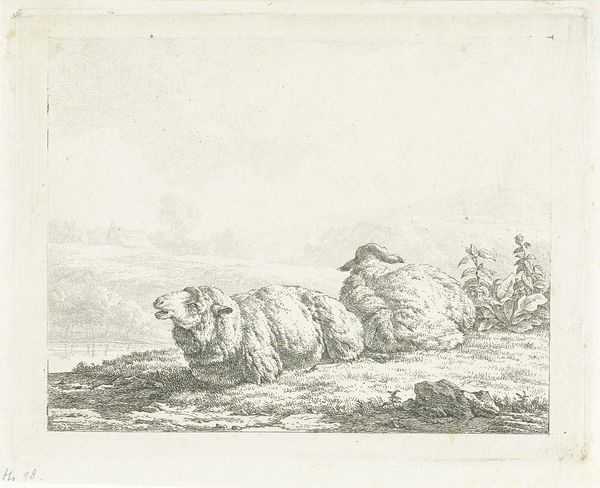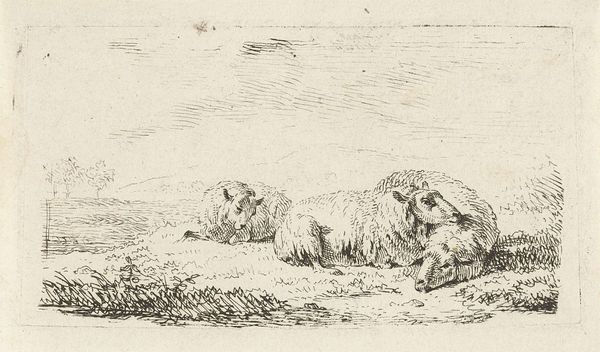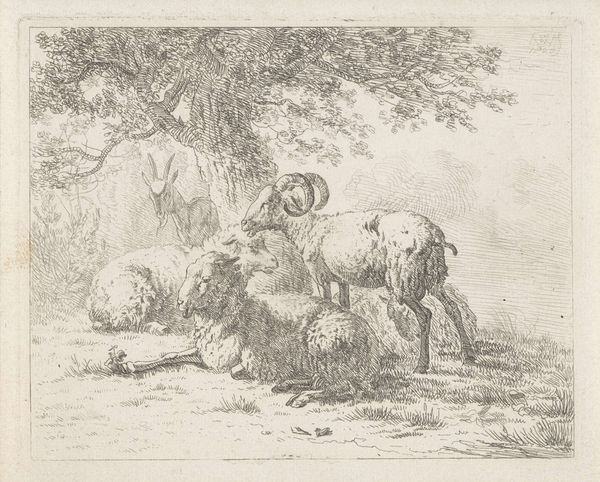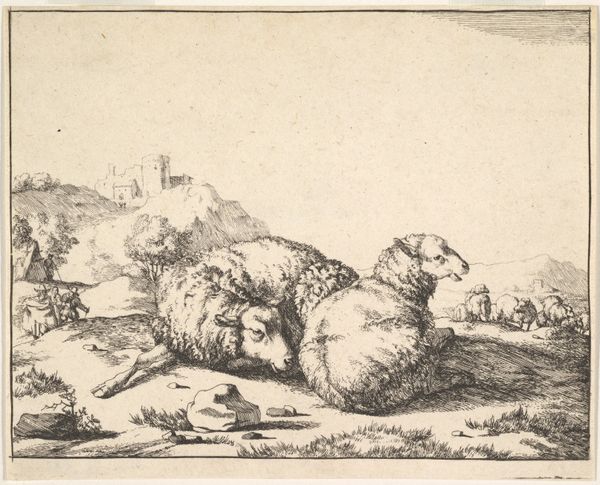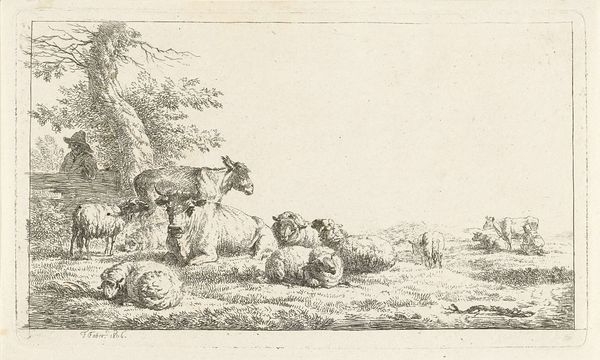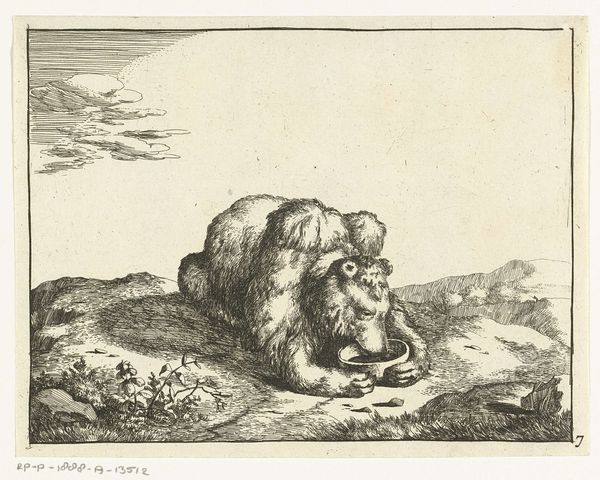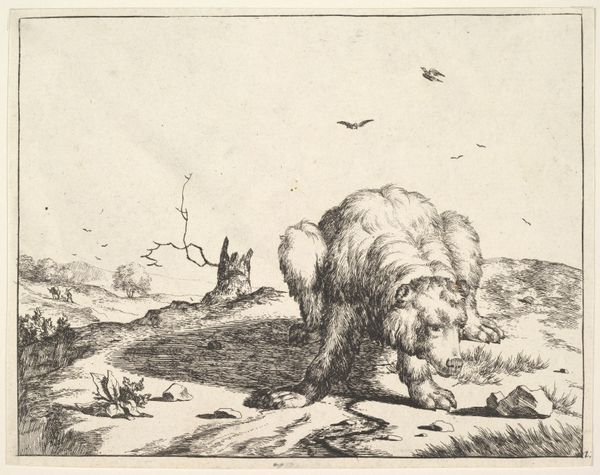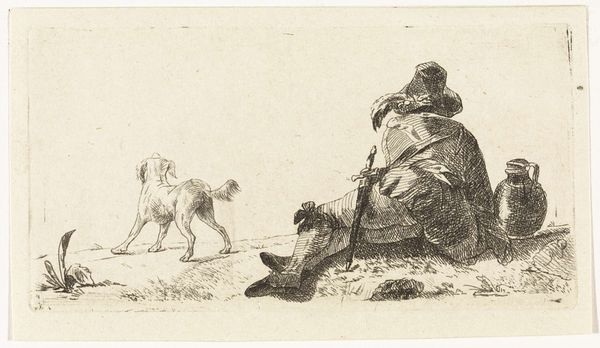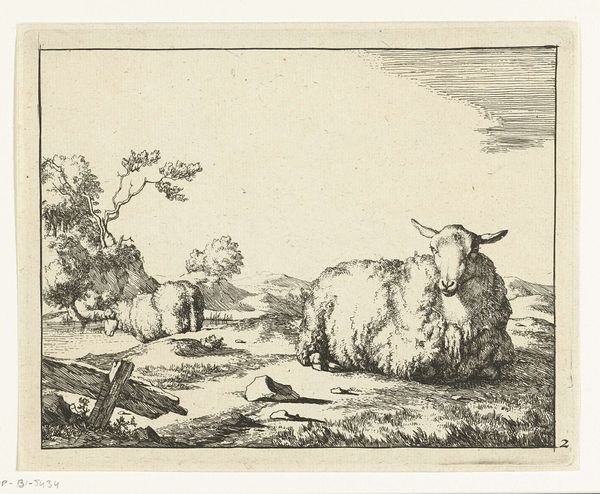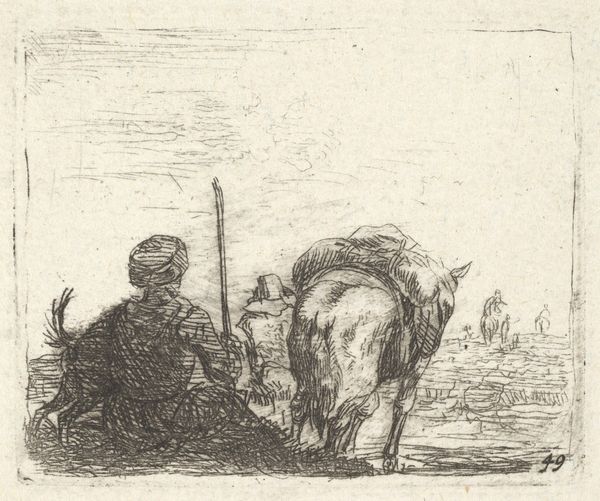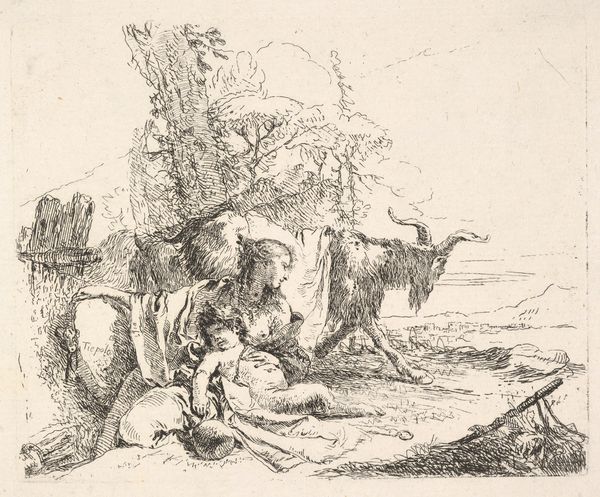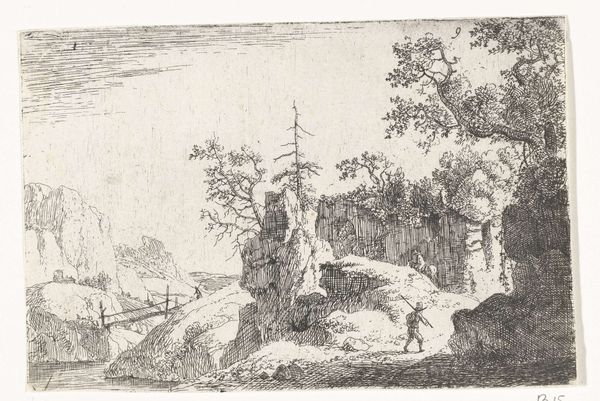
drawing, print, etching
#
drawing
#
light pencil work
#
quirky sketch
#
animal
# print
#
pen sketch
#
etching
#
pencil sketch
#
landscape
#
personal sketchbook
#
idea generation sketch
#
sketchwork
#
pen-ink sketch
#
sketchbook drawing
#
realism
#
initial sketch
Dimensions: height 128 mm, width 175 mm
Copyright: Rijks Museum: Open Domain
Curator: Before us is Pieter Gerardus van Os's "Liggende koe," or "Reclining Cow," an etching and print created around 1798 and held here at the Rijksmuseum. Editor: It’s wonderfully understated, almost a casual observation. The etching gives it this immediate, unfiltered quality. It’s incredibly delicate, light, and fresh. Curator: It is a departure from idealized pastoral scenes; we often see animals laden with symbolism within grand narratives. This is something quieter. Here, van Os captures a common farm animal, situating it within a sparse landscape—a move reflective of broader trends toward realism in Dutch art during that period. Editor: The texture achieved through the etching is intriguing. Look at the way the lines coalesce to define the cow's form—almost tangible, giving real heft. It reveals the artist's hand, his process of building up form and volume. You sense the labor and material quality so integral to printmaking, too. Curator: Van Os came from a family of artists, known, of course, for their paintings of landscapes and animals. However, his choice to utilize etching aligns with the period's democratizing impulse in visual culture; printmaking allowed for wider distribution, offering a glimpse into agrarian life to a broader audience beyond the elite. Editor: Absolutely, this work challenges the boundary between high art and craft. While van Os has pedigree as a well regarded artist, we should also recognize the skills required of craftsmanship in his material engagement with the print-making process. Curator: Precisely, "Liggende koe" participates in, and comments on, larger visual discourses related to rural labor and the value ascribed to representing commonplace subjects in art during the late 18th century. Editor: Yes. This etching resonates because the materiality gives us direct access to van Os's rendering, in turn highlighting the often undervalued artistic craft in representation. Curator: So, as you move on to the next piece, consider what hidden histories and social commentary might be lurking behind even seemingly simple depictions of everyday subjects. Editor: I leave with the impression of materiality, and that even a straightforward image is formed through skill, choice, and a lot of labour.
Comments
No comments
Be the first to comment and join the conversation on the ultimate creative platform.

